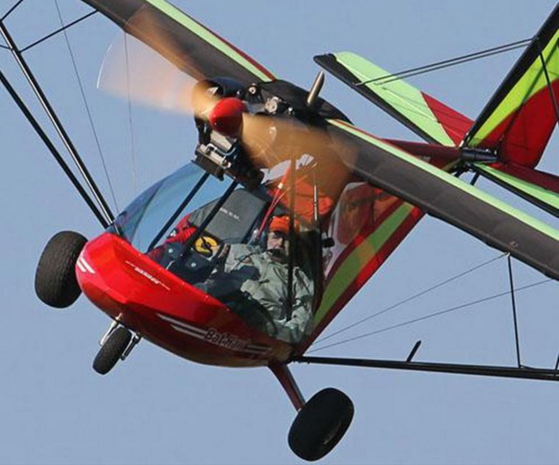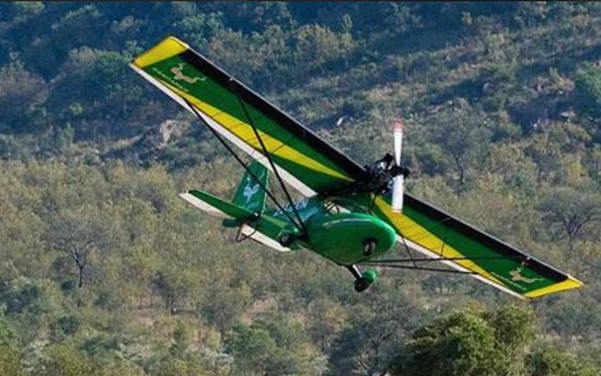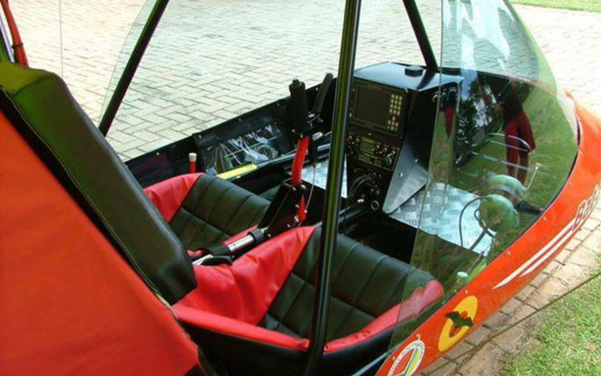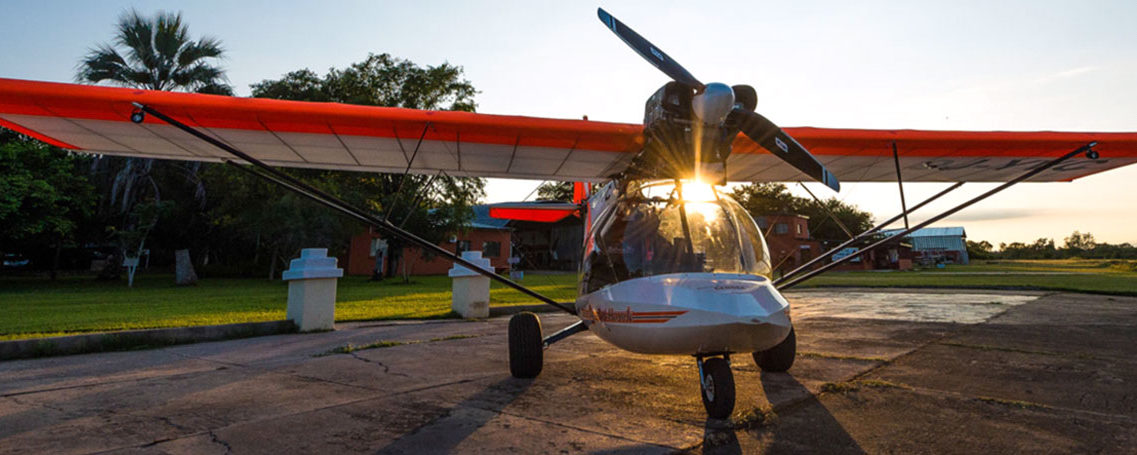
Specifications – Bat Hawk South Africa
Attached to the rear spar are full span flaperons of similar construction and covering. They work independently as ailerons and together as flaps. There is no flap position indicator but approximate settings can be determined from the flap selector angle. Maximum flap movement is restricted by a limit stop mounted on the flap lever quadrant.
The fin, rudder, tail plane and the elevator are also of similar materials and construction. Tubes form the leading and trailing edges with the section being flat sided between. The rudder is actuated by cables running from the pedals. A control stop for the pedals is fitted at the front of the fuselage tube. The ailerons are controlled by cables from a torque tube connected to the central control stick, which has a built-in control stop. The elevator is actuated by a push/pull cable attached directly to the control stick which has built-in stops.
The Bat Hawk is a high wing monoplane with the crew of two seated side by side in an under slung tubular framed structure surrounded by a glass fibre composite fairing.
Crew members are protected from the weather by a very large wrap around windshield. The propeller and the engine are mounted in a tractor position above and ahead of the crew. The empennage is conventional in location and layout. The undercarriage is a tricycle arrangement with a steerable nose-wheel. The wing, which is strut and lift wire braced, has two tubes forming the spars, one at the leading edge and one at the rear edge of the wing. All the above parts are manufactured from corrosion resistant aluminium alloy and stainless steel wires, whilst the air-frame and wings are covered with tensional Dacron sailcloth.






